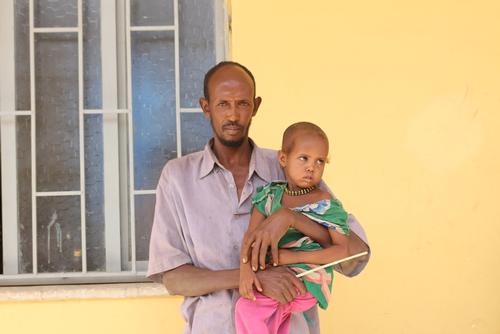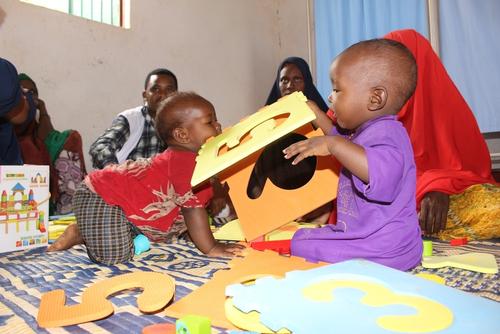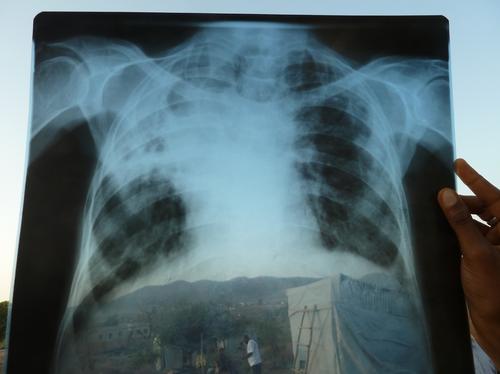The eastern Ethiopian regions of Afar and Sitti are dry and inhospitable places for much of the year. Yet this is where many pastoralists live, moving from place to place, searching for water and pasture to feed their precious livestock.
This delicately balanced life changed two years ago when unusually light rains caused nothing to grow and livestock to die. The ensuing drought challenged the very way of life of these nomadic communities.
Many of the local nomadic peoples of this region say that this drought was the worst in 25 years. Without any nearby water or pasture to feed on animals stopped producing milk and started to die. Pastoral communities became dependent on aid provided by the government and a handful of NGOs.
For two years there was little if any rain and, in desperation, many started to sell their animals to buy food. In a culture where livestock is linked to status and human survival, it is sometimes said that the pastoralists, “would rather die than sell their animals”. This was obviously a difficult choice.
Mohammed Delal was originally part of a Médecins Sans Frontières (MSF) assessment team sent to Afar in September. “When we arrived the situation was awful. I was really struck by one area in particular,” he says. “We saw a field with many, many graves. One of the more recent ones contained a mother, a father and five children. Apparently they had all passed away from malnutrition or associated illness.”
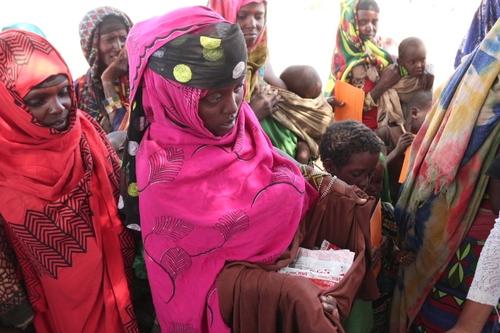
“In some places we visited, we could smell death. Animals had been dying at an alarming rate and local people were struggling to bury the decomposing remains. This left a lingering putrid smell in the air.”
At the clinics MSF works from, there was an an ever increasing number of malnourished children. Their parents brought them to the organisation as they had nowhere else to go. Diseases associated with hunger and squalid conditions like measles, watery diarrhoea and pneumonia started to spread.
During the course of the drought, different clans adopted different coping strategies. Some of the strongest Somalis in Afar set off with their families on the long road to Djibouti, where they could rely on support from fellow clan members.
But Mohammed met many who were too weak to travel. One group he came across in the bush had no remaining food. When asked where they were going the group’s elder responded simply, “we are waiting to die, we have no more livestock and we cannot move forwards or back. There is nothing left for us.”
In the first months of 2016, things deteriorated further and the Ethiopian government launched an appeal for international support. MSF was already in Ethiopia working with government agencies, humanitarian NGOs and the World Food Programme.
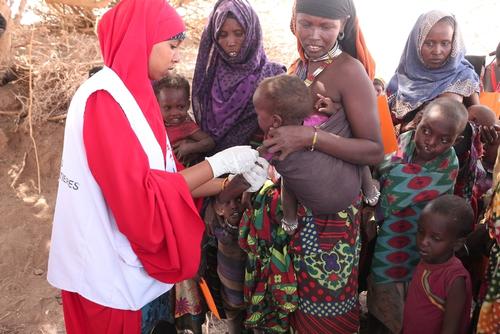
Gradually, some positive results were achieved through targeted food distribution and therapeutic feeding programmes. Support was getting through to those families most in need and the most acutely malnourished children.
Things started to change in mid-March as the rains finally started to arrive, but this was with a cruel bitter-sweetness. The constant blue skies, that for so long scorched the land now turned grey and eastern Ethiopia was hit by relentless showers.
In the first days, many of the roads that humanitarian agencies used turned to mud and became impassable. Some of the affected people's makeshift shelters were washed away along with livestock. Many locals said that this was the worst rain that they had ever experienced.
MSF was concerned that people would be cut off from food aid and medical support, but there was now also the possibility of cholera and a resurgence of malaria.
Things became incredibly difficult. According to Ekin Gayretli, MSF’s project manager in Sitti region, “Our three main operational bases had to scale down outreach to the more remote locations, but we continued nonetheless.”
The MSF team in Afar was looking at new ways of reaching the vulnerable as it was becoming harder and harder to access these families. “During the worst of the floods we went out and screened the children,” said Mohammed. “Those families with children in need of help would receive a double ration of the high energy food plumpynut.”
By the time the strategy was put into action, Mohammed's time in Afar was ending and he was preparing to go home. Leaving a project is always difficult, especially when there is so much to do.
While the rain continued, the region slowly underwent a metamorphosis. Grass started to grow everywhere and the once semi-arid landscape now turned green. To the people of the region this obviously brought a sense of relief.
“Over time we could see a change,” remarked Luis Ponte, who took over as project manager in Afar halfway through the floods. “The animals that had been little more than skin and bones started to put on weight. Once again milk, one of the staples of nutrition in the area, was being sold by the pastoralists.”
Although the numbers of malnourished children have also dropped, the situation continues to be unstable. When asked about the situation a few days ago, Luis reported, “There is still a need. From time to time we still come across families with severely malnourished children. We are also aware that the rain that has fallen has only lasted a month. We can only hope that this is enough for the pastoralists to survive the lean period when nothing grows.”



